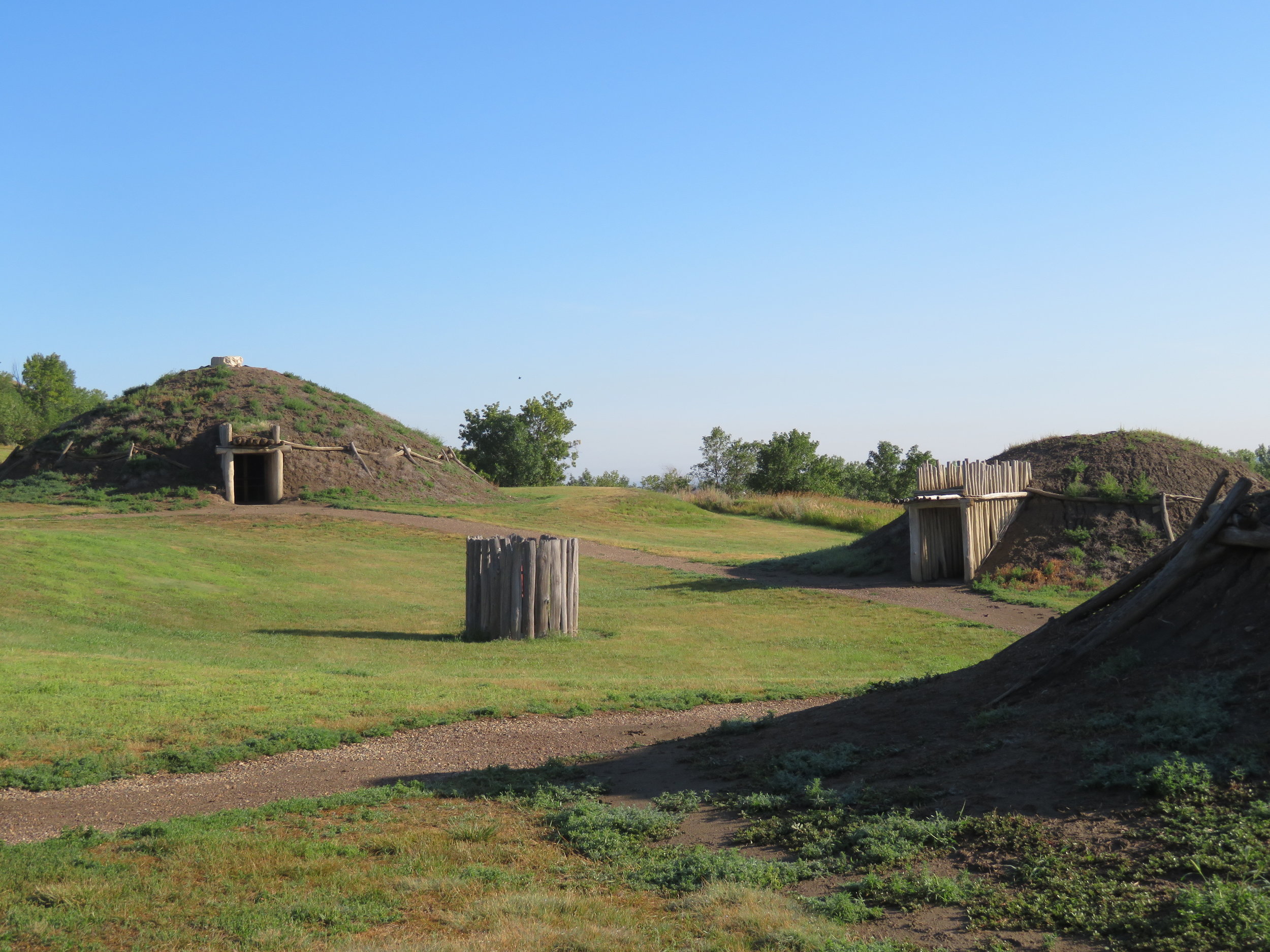TTH – Road Art and Fort Abraham Lincoln
/We woke to the rumble of thunder. A black, ominous sky threatened and then the heavens opened and down came the rain … in torrents and rivers. Lightning bolts streaked the sky and thunder cracked and boomed all around us. We had packed up last night, so had no problems getting on the road. We made a quick stop at the park’s visitors center to see Roosevelt’s Maltese cabin which had been relocated to the center’s backyard. Not much to see in the rain ... plus I worried I might melt.
Roosevelt's Maltese cabin
Once on I-94, it began to hail. We pulled off to the side of the road. Hail is bad enough, but at 70 mph, it can really do some damage. We watched the temperature drop 8 degrees in a matter of minutes. We waited patiently until the storm cell passed and we were back in business and on the road again.
One bugaboo we’ve encountered while camping is the lack of easy wifi access for posting blogs. It seems foolish to interrupt today’s good time, so we can write about yesterday’s adventure. Some Mickey D’s are good, but it takes about an hour to post a blog and sitting there for an hour drinking a coffee and using up their wifi when the place is crowded seems a bit piggy. There was no wifi at the national park and no McD’s in nearby Medora. A few coffee shops offered wifi, but were crowded. David is now researching economical, reliable options when we’re on the road with no public wifi access. We finally found a McD’s about 35 miles east in Dickinson, ND and I got the job done, but it was a challenge. Anybody have any reasonable suggestions we can explore?
The North Dakota state map has a little blurb on it about the Enchanted Highway, a 31-mile stretch of road between Gladstone and Regent. Artist Gary Greff, a retired local schoolteacher, began the project nearly three decades ago in an effort to revitalize his hometown of Regent. Using donated land and materials, he’s created several enormous metal sculptures which line the road each few miles. I’d mentioned it in passing, but we decided the 62 mile roundtrip was a bit too much of a detour for road art. Then we saw the sign on I-94 for the ‘world’s largest metal sculptures’ and decided we’d just go a couple of miles and see what they were about. Click on the thumbnail to enlarge the photos.
It was a worthwhile detour. We took the whole tour … all the way to Regent. The metal road art is wonderful. We couldn’t resist a stop at the Enchanted Highway gift shop. We passed up an inordinate number of possible Enchanted Highway souvenirs and only bought a couple of postcards … and an ice cream cone. Take a look and see what’s next.
We looked at posted sketches of the next sculptures to be built ... End of the Trail and Spider Web
Back on I-94, we coasted along at 70mph heading east. After the Enchanted Highway, I wasn’t surprised to see a huge cow statue on the hill as we passed New Salem, ND, a few miles down the road. Salem Sue she’s called and she’s the world’s largest fiberglass Holstein.
Salem Sue
Our camp for the night was located in Fort Abraham Lincoln State Park, a few miles outside of Mandan, ND. The campsite, on the banks of the Missouri River once again, was lovely with great views of the river. A sandbank in mid-river was the home to several seabirds … gulls, cormorants and pelicans. Canada geese flotillas floated by. A heron, concentrating on dinner, sat in the midst of the gull-pelican community, seemingly oblivious to the hubbub and bird chat around him while pelicans preened.
The campground is on the historical site of Fort Abraham Lincoln. The fort was built to ensure the safe expansion of the Great Northern Railway. One of its claims to fame is that George Custer was assigned and lived here with his wife, Libbie, from 1873 till his death at Little Big Horn in 1876. Their house, as well as the soldiers’ barracks and several outbuildings, have been rebuilt as part of a state historical site. The Custer House is reputedly haunted, but we neither saw nor heard any spirits.
George Custer's house while he was stationed at Fort Abraham Lincoln
A walk around the grounds introduced us to the On-A-Slant Village, a reconstructed earth-mound Mandan village. My knowledge of the Plains tribes is negligible and this was an eye-opener. In my ignorance, I thought most native people lived in tipis, but these earth-mound lodges were roomy, well-built and pretty ingenious. This was a great introduction to our next stop at the Knife River Indian Villages National Historic Site.
On-a-Slant Mandan Indian village
It was also a reminder of how much we loved some of the Western artists of the times … George Catlin is an especial favorite, but we also discovered the works of Karl Bodmer, a Swiss/French artist who accompanied German explorer Prince Maximilian from 1832 through 1834 on his Missouri River expedition.
Mandan Village - George Catlin 1832 - the original in on display at the Smithsonians


















